

Photo by Priscilla Du Preez on Unsplash
Reading books about the environment can be a great way to not only stay informed about issues facing the natural world, but also to become inspired to take action in your community and make a positive contribution to the planet.
In this article, we’ll introduce you to some of the best books about climate change and other eco-issues, including pollution, the use of fossil fuels, and environmental policy. We’ll also give you a few recommendations for children’s books about climate change, ocean plastics, plants and more.
6 Best Books About the Environment for Adults
Each product featured here has been independently selected by the writer. You can learn more about our review methodology here. If you make a purchase using the links included, we may earn commission.
- Best New Release: All We Can Save: Truth, Courage, and Solutions for the Climate Crisis by Ayana Elizabeth Johnson and Katharine K. Wilkinson
- Best Book About Climate Change: The Uninhabitable Earth: Life After Warming by David Wallace-Wells
- Best Book About Activism: No One Is Too Small to Make a Difference by Greta Thunberg
- Best Book About Pollution: Silent Spring by Rachel Carson
- Best Book About Social Impacts: Rising: Dispatches from the New American Shore by Elizabeth Rush
- Best Book About Food: The Omnivore’s Dilemma: A Natural History of Four Meals by Michael Pollan
Best New Release: All We Can Save: Truth, Courage, and Solutions for the Climate Crisis by Ayana Elizabeth Johnson and Katharine K. Wilkinson
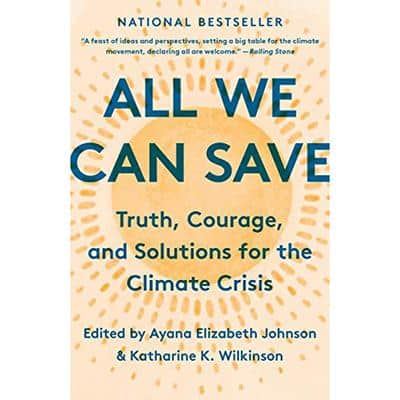
Ayana Elizabeth Johnson and Katharine K. Wilkinson
“All We Can Save” is a thought-provoking compilation of essays, poetry and art from dozens of women working to solve climate change in the U.S., from scientists and lawyers to farmers and teachers. The collection’s editors, Dr. Ayana Elizabeth Johnson and Dr. Katharine K. Wilkinson, focus on representation within the book, making sure to include voices from all walks of life in the conversation.
Reader Rating: 4.9 out of 5 stars with about 500 Amazon ratings
Why It’s a Must-Read: This Los Angeles Times bestseller book will leave you feeling hopeful and armed with ideas for how to tackle climate change independently, whether it’s supporting climate journalists, marching in the streets or simply talking about the issue with your loved ones and neighbors.
Best Book About Climate Change: The Uninhabitable Earth: Life After Warming by David Wallace-Wells
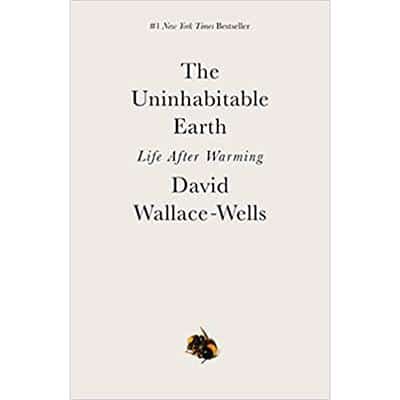
David Wallace-Wells
To get up to speed on global warming and the ensuing ecological crisis, we recommend checking out David Wallace-Wells’s “The Uninhabitable Earth.” The book presents both the latest research on a variety of climate-related topics and an informed look into how the crisis may play out to affect global politics and capitalism, incite food shortages and climate wars, and change the trajectory of humanity.
Reader Rating: 4.5 out of 5 stars with over 2,500 Amazon ratings
Why It’s a Must-Read: It’s not exactly light reading, but this New York Times No. 1 bestseller is well-researched (and well-cited), presenting thought-provoking information about the future of our planet in an accessible way.
Best Book About Activism: No One Is Too Small to Make a Difference by Greta Thunberg

Greta Thunberg
If you’re looking for something to get you inspired, check out Greta Thunberg’s “No One Is Too Small to Make a Difference.” The book is a collection of speeches that Thunberg, a teen activist and Nobel Peace Prize nominee, has given about the climate crisis to leaders at the United Nations and on Capitol Hill, as well as to fellow youth activists at climate marches and Fridays For Future gatherings across the globe.
Reader Rating: 4.7 out of 5 stars with over 800 Amazon ratings
Why It’s a Must-Read: Thunberg’s unflinching voice and profound calls for action will leave you brimming with a mix of frustration and hope for the next generation of climate leaders — plus a healthy urge to pen strongly worded letters to your elected officials.
Best Book About Pollution: Silent Spring by Rachel Carson
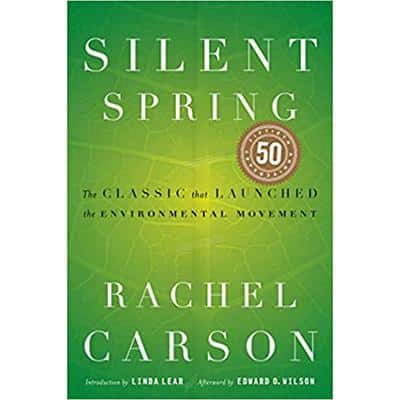
Rachel Carson
Rachel Carson is widely accepted as a key figure in the history of environmentalism, as her 1964 book “Silent Spring” sparked revolutionary policy changes that protected natural resources from air to land to water.
The book alerted the public to how widely used chemicals and pesticides including DDT negatively affected not only human health, but also posed grave threats to natural spaces. As such, it inspired a new generation of activists and continues to be “required reading” for environmentalists today.
Reader Rating: 4.6 out of 5 stars with over 2,500 Amazon ratings
Why It’s a Must-Read: While it follows the journey of chemicals circulating through ecosystems and provides historical context for environmental issues we’re still facing today, “Silent Spring” is written with exceptional prose that holds up decades after its initial publication.
Best Book About Social Impacts: Rising: Dispatches from the New American Shore by Elizabeth Rush
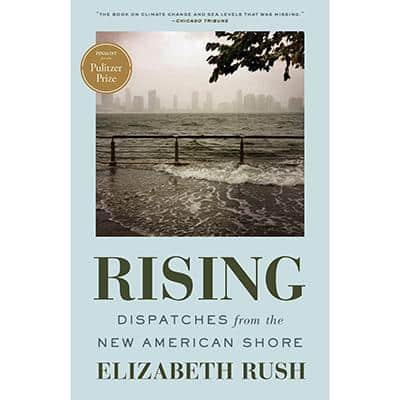
Elizabeth Rush
In “Rising,” journalist Elizabeth Rush explores how climate change is taking a toll on wildlife and how people in low-lying coastal areas are already being forced to flee to higher ground or risk their lives weathering intensifying storms and sea-level rise.
Rush weaves together insightful interviews with climate scientists and compelling stories from coastal communities across the U.S. The result is a haunting look at one of the initial social impacts of climate change that’s sure to worsen with time.
Reader Rating: 4.5 out of 5 stars with over 200 Amazon ratings
Why It’s a Must-Read: “Rising” interlays science and personal narratives to create an impactful illustration of how sea-level rise is threatening our coastlines and what’s in store as the environmental crisis continues.
Best Book About Food: The Omnivore’s Dilemma: A Natural History of Four Meals by Michael Pollan
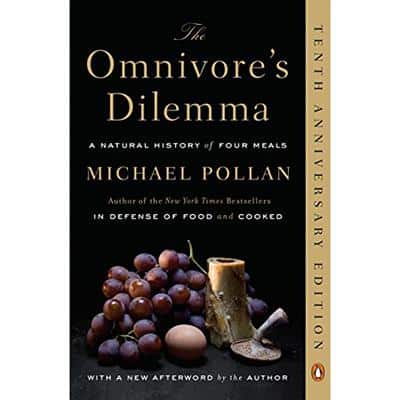
Michael Pollan
Michael Pollan’s “The Omnivore’s Dilemma” explores how our diets affect the world around us, delving into the U.S. agricultural industry and the politics around what we eat. It’s an eye-opening look at food that touches on policy, economics, and the revolution of our relationship with the natural world.
Reader Rating: 4.6 out of 5 stars with over 3,100 Amazon ratings
Why It’s a Must-Read: “The Omnivore’s Dilemma” will make you consider not only how what you eat affects your body, but also the bigger impacts of the American diet and how you may be able to live more sustainably by changing your food choices.
5 Best Children’s Books About The Environment
It’s never too early to teach your children about environmental stewardship and the importance of protecting the natural world. These five fiction books touch on critical environmental topics in informational yet entertaining ways that kids can relate to:
- Best Children’s Book About the Environment: The Lorax by Dr. Seuss
- Best Children’s Book About Climate Change: The Lonely Polar Bear by Khoa Le
- Best Children’s Book About Ocean Plastics: Rocket Says Clean Up! by Nathan Bryon
- Best Children’s Book About Ecology: The Magic and Mystery of Trees by Jen Green
- Best Children’s Book About Activism: Hoot by Carl Hiaasen
Best Children’s Book About the Environment: The Lorax by Dr. Seuss

Dr. Seuss
A classic work of Dr. Seuss, “The Lorax” is an excellent introduction to the dangers of environmental degradation and the importance of speaking up when it counts. In the story, unique and beautiful Truffula Trees are clear-cut until all that’s left of the species is a single seed. The last remaining Truffula seed is entrusted to a child who can go on to save the forest, proving that even young kids can make a positive impact on the environment.
Reading Ages: 3 to 7 years old
Reader Rating: 4.9 out of 5 stars with over 7,700 Amazon ratings
Why It’s a Must-Read: Told in Dr. Seuss’s signature rhymes and imaginative illustrations, the story of the Lorax is one that still rings true 50 years after it was originally printed.
Best Children’s Book About Climate Change: The Lonely Polar Bear by Khoa Le

Khoa Le
Climate change can be tough for kids to wrap their heads around, but “The Lonely Polar Bear” serves as a subtle introduction to the topic. In the book, a polar bear wakes up after an Arctic storm to find himself all alone, his mother and brother nowhere to be found. He soon makes friends with a little girl and wanders across the Arctic to find his family, meeting other animals that are dependent on the shrinking polar environment including elk, wolves, whales and puffins.
Reading Ages: 6 to 12 years old
Reader Rating: 4.6 out of 5 stars with over 100 Amazon ratings
Why It’s a Must-Read: Along with teaching about climate change and the melting Arctic, “The Last Polar Bear” explores the biodiversity of polar wildlife and the importance of friendship.
Best Children’s Book About Ocean Plastics: Rocket Says Clean Up! by Nathan Bryon

Nathan Bryon
“Rocket Says Clean Up!” tells the story of Rocket, a science-loving kid who is visiting her grandparents at the beach. Rocket’s plans to surf all vacation are thwarted when she finds a baby sea turtle tangled in plastic and decides to do something about all of the trash polluting the coast. Through educating fellow beachgoers and organizing a cleanup, Rocket clears the beaches and allows the little turtle to safely return to its home.
Reading Ages: 3 to 7 years old
Reader Rating: 4.9 out of 5 stars with over 600 Amazon ratings
Why It’s a Must-Read: This inclusive children’s book shows young kids that our beaches are in trouble but that we can still turn the tide on ocean plastics. It also includes a section on sustainability and how readers can take action and clean up their own communities.
Best Children’s Book About Ecology: The Magic and Mystery of Trees by Jen Green
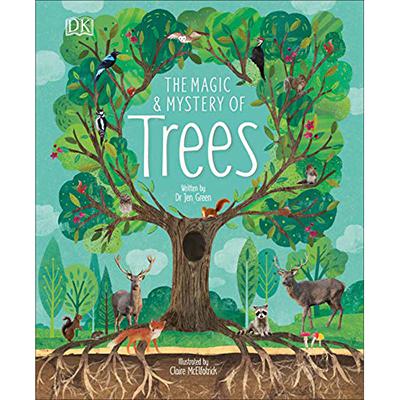
Jen Green
In a way that’s easy for kids to understand, Jen Green’s “The Magic and Mystery of Trees” explains the intricacies of these organisms, from their web of roots that tangles underground to how they communicate with one another. The book even has sections that address the threats against trees and how we can help them thrive, bringing kids into the conversation around conservation.
Reading Age: 3 to 9 years old
Reader Rating: 4.9 out of 5 stars with over 1,700 Amazon ratings
Why It’s a Must-Read: “The Magic and Mystery of Trees” eases kids into the subject of ecology and will leave your children filled with wonder at the natural world.
Best Children’s Book About Activism: Hoot by Carl Hiaasen
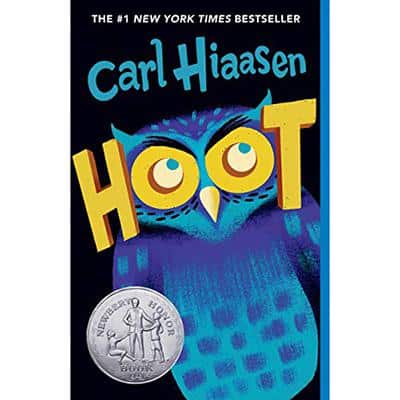
Carl Hiaasen
In “Hoot,” a teen and his friends attempt to stop the construction of a new restaurant that would destroy an endangered burrowing owl habitat. A Newbery Honor winner and No. 1 New York Times bestseller, “Hoot” is a classic environmental book that proves anyone can make a difference by standing up for a cause they believe in.
Reading Age: 9 to 12 years old
Reader Rating: 4.7 out of 5 stars with over 2,500 Amazon ratings
Why It’s a Must-Read: Although it’s written with young teens in mind, Carl Hiaasen’s representation of Florida’s wild spaces and its colorful inhabitants — both human and animal — will give parents just as much enjoyment out of reading this book.

 233k
233k  41k
41k  Subscribe
Subscribe 